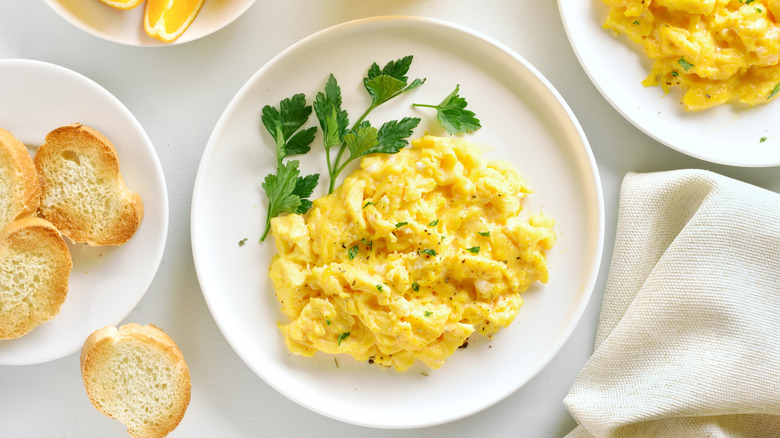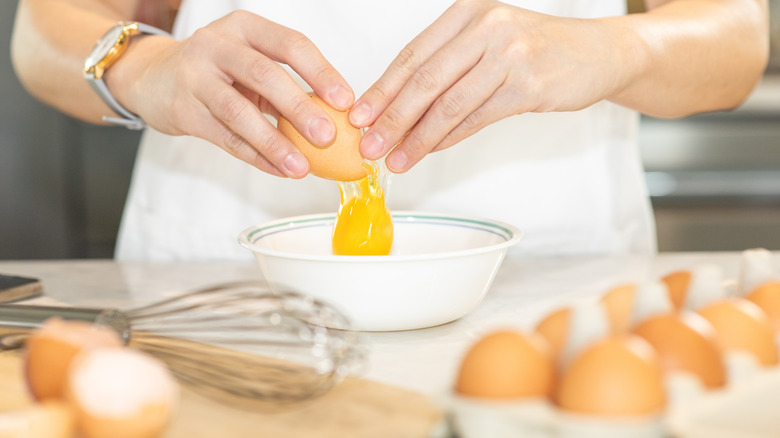Never Forget This Crucial Step When Making Scrambled Eggs
It's breakfast time: you're rushing out the door to make it to work before 9:00, and you have a table full of groggy, hungry mouths to feed. It's scrambled eggs to the rescue. Or, maybe it's dinner time, and today was particularly tiring for some reason (you know those days) — that's where fail-safe speedy recipes like fried rice come in handy. It's time to scramble up a few more eggs.
Healthline lauds eggs as "among the most nutritious foods on the planet." Just one egg, it says, is loaded with six grams of protein, five grams of healthy fats, 6% of the recommended daily amount of vitamin A, and over 100 mg of choline. Plus, they're cost-effective. At a Whole Foods Market in Brooklyn, New York, eggs run for $0.40 a pop. But even though eggs can be a mealtime lifesaver in a pinch, how you scramble your eggs matters. There's one crucial step you should never forget when making scrambled eggs.
Get whisked away
According to Lucile Plaza, executive chef of New York City's Le Coq Rico, many cooks break their eggs directly into the hot skillet to save time via Eat This, Not That. But, crack those eggs into a separate bowl first to whisk them before transferring them into the pan. The extra step might seem like a hassle, but it's worth the extra minute.
Nobody wants dense, rubbery scrambled eggs; that's where whipping them separately comes in. Whipping egg whites break apart tightly tangled proteins, says the Kitchn. When those proteins loosen, they wrap around the air bubbles you just introduced as you whipped, trapping air inside your fresh-fluffed eggs. (Fine Dining Lovers recommends using a fork for whipping instead of a whisk, which tends to add in too much air and make your delicate egg batter tough.) "Whisking helps incorporate air in your eggs and makes them more fluffy," explains Plaza, via Eat This, Not That. It's a simple step that makes all the difference in achieving that signature light, airy mouthfeel.

